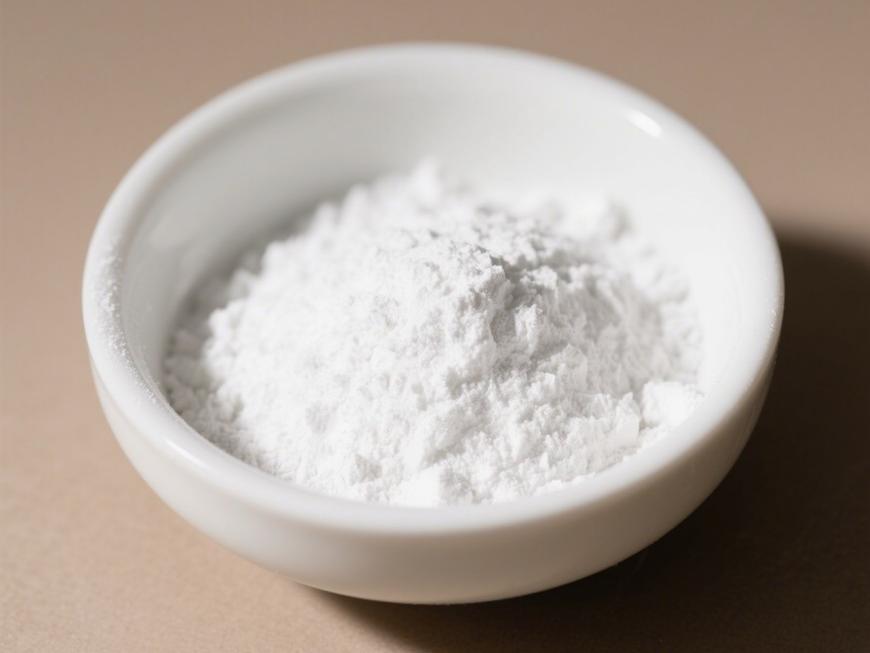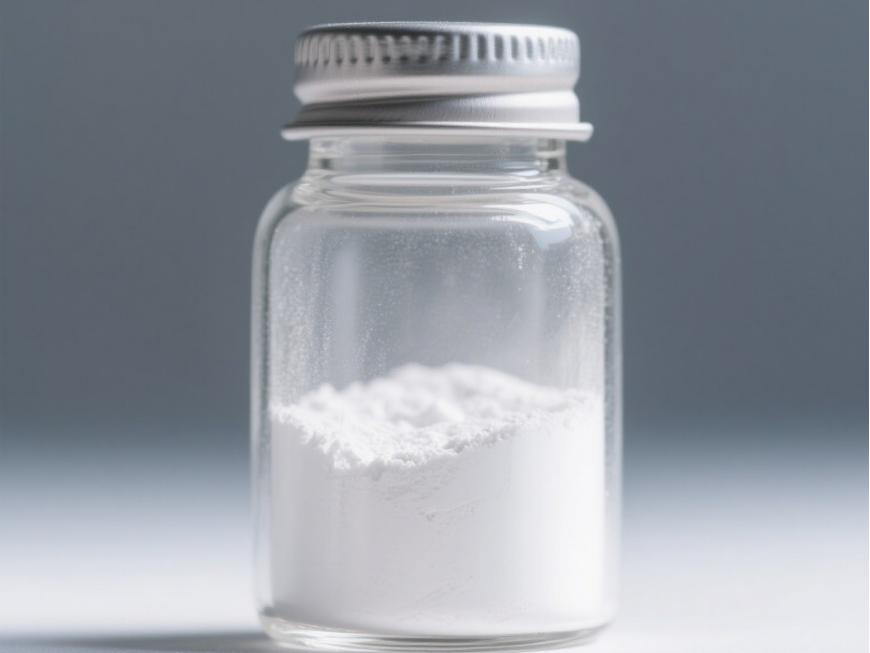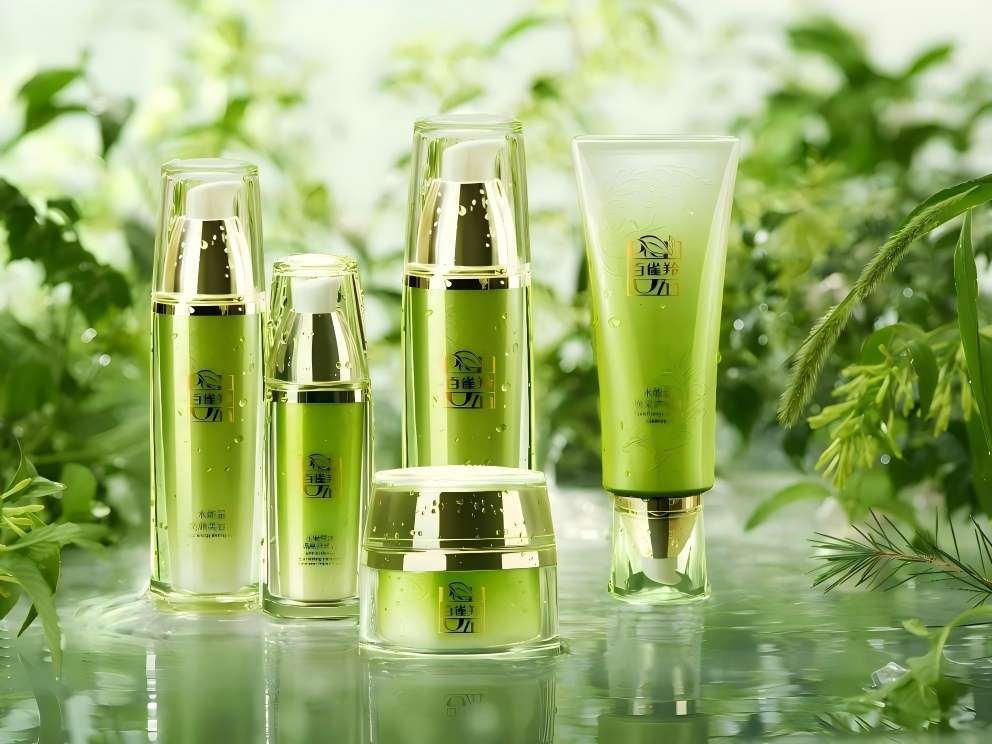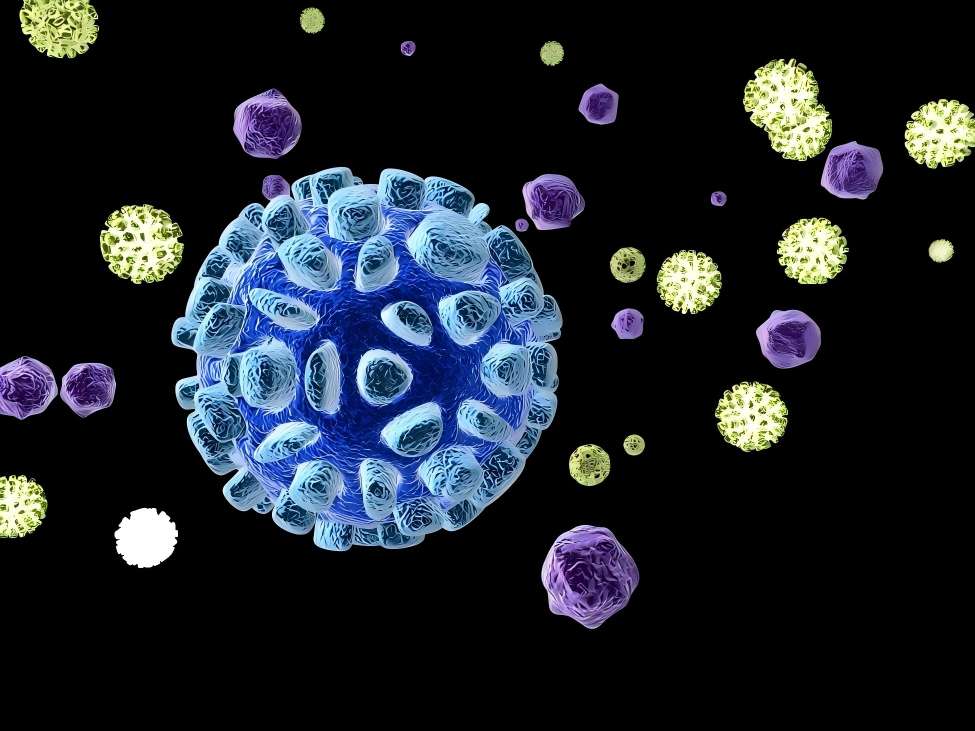What Is the Use of Hyaluronic Acid in Oral Care Products?
Hyaluronic acid is a linear polysaccharide composed of D-glucuronic acid and N-acetylglucosamine units linked by glycosidic bonds. Its commercial form is primarily its sodium salt, known as ‘sodium hyaluronate.’ Hyaluronic acid is a major component of the intercellular matrix and extracellular matrix, widely distributed throughout human tissues. It is most abundant in the dermis layer of human skin and in joint synovial fluid. Due to its excellent moisturising properties, viscoelasticity, and biocompatibility, hyaluronic acid has been widely applied in the fields of medicine, cosmetics, and functional foods. In the cosmetics industry, it primarily serves functions such as moisturisation, repair, and delaying skin ageing. Currently, hyaluronic acid is being used as a new functional ingredient in oral care products such as toothpaste and mouthwash.
1 The Relationship Between Hyaluronic Acid and the Oral Cavity
In oral tissues, the hyaluronic acid content in periodontal soft tissues, gingiva, and periodontal ligaments is higher than in hard tissues such as alveolar bone and cementum. The tissue structure of oral mucosa is similar to that of skin, consisting of epithelium and a lamina propria, with hyaluronic acid primarily present in the lamina propria [1-3]. Xing Roudong et al. [4] used an enzyme-linked immunosorbent assay (ELISA) to measure hyaluronic acid levels in saliva from healthy individuals, finding that total saliva hyaluronic acid levels ranged approximately from 136 to 587 ng/mL, while the concentration in parotid gland fluid was approximately 63–158 ng/mL. The high concentration of hyaluronic acid in saliva may facilitate rapid wound healing without scarring, as well as lubricate and protect the oral mucosa. Yang Guofeng et al. [5] found that hyaluronic acid exhibits time- and space-specific expression during tooth germ development, first appearing in the thickened tooth plate epithelium, then in the intercellular spaces of epithelial cells in the central region of tooth buds during the budding stage, followed by expression in the intercellular spaces of cells in the stellate network layer of the tooth germ and in the intercellular spaces of odontoblastic mesenchymal cells, suggesting that hyaluronic acid may be closely associated with tooth germ morphogenesis.

In recent years, with the deepening of basic research on hyaluronic acid and the accumulation of clinical experience, its anti-inflammatory, antibacterial, osteogenic, anti-edema, and wound-healing properties have been increasingly discovered and applied in the treatment of oral diseases. Numerous studies both domestically and internationally have shown that hyaluronic acid has a good auxiliary effect in the treatment of periodontal diseases, oral mucosal diseases, and dental pulp diseases [6]. and it has also found relatively widespread application in the field of oral and maxillofacial surgery [7]. However, there are few reports on the use of hyaluronic acid in oral care.
Oral care is an important means of maintaining oral hygiene, preventing or alleviating oral diseases, and improving oral health [8]. Oral care products primarily include toothpaste, toothbrushes, mouthwash, and other oral care items, with toothpaste accounting for approximately 65% of the market share, toothbrushes for approximately 25%, and mouthwash for approximately 5% [9]. Oral health is an important component of overall human health. With the continuous improvement of living standards and the upgrading of consumption awareness, the quality and functionality of oral care products have become a growing focus for consumers. Traditional products primarily emphasise the prevention of dental issues, with functions such as cleaning teeth, preventing cavities, alleviating tooth sensitivity, and inhibiting plaque formation. In recent years, products targeting oral issues such as alleviating gum problems, repairing oral mucosa, reducing oral odour, and maintaining oral health have gained greater market acceptance [10]. Hyaluronic acid, a natural active ingredient with moisturising, anti-inflammatory, and repairing properties, offers new possibilities for upgrading oral care products.
2 Oral Care Benefits of Hyaluronic Acid
2.1 Moisturising the Oral Cavity and Alleviating Dry Mouth
Normal adults produce 1,000–1,500 mL of saliva daily. When the saliva secretion rate is lower than the sum of the saliva absorption rate by the oral mucosa and the saliva evaporation rate, the body experiences a dry mouth condition or sensation [11]. The prevalence of xerostomia ranges from 5.5% to 46%, increasing with age, and in individuals over 65 years old, the incidence rate is approximately 30% to 40% [12]. Additionally, xerostomia may be associated with damage to the salivary glands caused by certain diseases or their treatments. Oral dryness can make oral soft tissues such as oral mucosa and gingival tissue more susceptible to physical, chemical, or biological damage. Prolonged dry mouth can alter the oral environment, leading to halitosis, oral inflammation, and in severe cases, may affect speech and cause difficulty swallowing.
Hyaluronic acid molecules are linear single chains, with each disaccharide unit containing a carboxyl group. Under physiological conditions, they dissociate into negative ions, which repel each other at equal distances, causing the molecules to highly extend in aqueous solutions, resembling ‘molecular sponges.’ Water molecules bind to hyaluronic acid molecules through polar bonds and hydrogen bonds within this space, enabling hyaluronic acid to absorb and retain water equivalent to 1,000 times its own weight. Wang Bing et al. [13] utilised the excellent moisture-retaining properties of hyaluronic acid for the treatment and relief of oral dryness. By comparing saliva volumes before and after use, they demonstrated that formulations containing hyaluronic acid exhibit sustained oral moisturising effects, while being non-toxic, odourless, and having a pleasant taste.
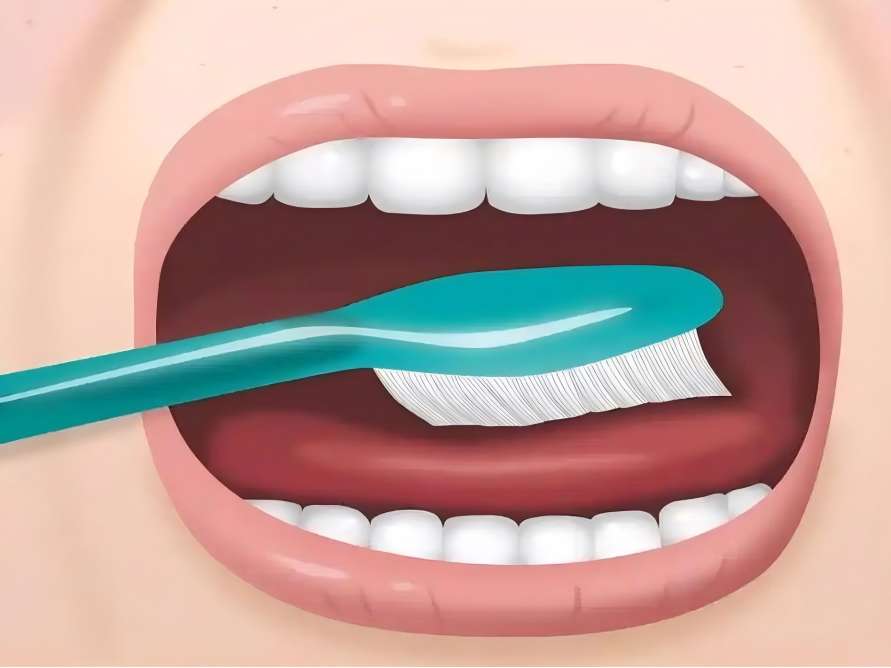
Meng Xiangjing et al. [14] used hyaluronic acid as one of the active ingredients in a formulation to alleviate dry mouth symptoms, effectively reducing chronic and temporary dry mouth caused by diseases, medication use, chemotherapy, and aging, while lubricating the oral cavity and maintaining oral moisture. Colgate-Palmolive Company's S. Pielke et al. [15] applied for a patent for a toothpaste composition for treating oral dryness, adding hyaluronic acid to toothpaste and oral rinses to maintain moisture, prevent, and improve dry mouth.
2.2 Inhibiting dental plaque and improving gum health
Plaque-induced gingivitis is a chronic infectious disease of the gum tissue caused by pathogenic microorganisms, serving as a precursor to periodontitis. If not treated promptly and thoroughly, gum inflammation may progress to periodontitis under the influence of internal and external factors, posing significant risks to oral and overall health.
Huang Jiao [16] used the paper disc diffusion method to study the antibacterial activity of hyaluronic acid against four of the most common periodontal pathogens. The results showed that at a concentration of 2 mg/mL, hyaluronic acid exhibited inhibitory effects against Porphyromonas gingivalis (P. gingivalis, P.g), Actinomyces actinomysetum (A. actinomycetemcomitans, A.a), Prevotella intermedia (P.i), and Fusobacterium nucleatum (F.n), with inhibition zones of 2 mm in diameter. At a concentration of 1 mg/mL, hyaluronic acid still inhibited P.g and P.i, but the inhibitory effect on P.i was weaker, forming only a 1 mm inhibition zone.
Munerah Bins et al. [17] conducted an in vitro antibacterial test to compare the inhibitory effects of 0.2% chlorhexidine and 0.8% hyaluronic acid on P.g. The results showed that the 0.8% hyaluronic acid group exhibited a significant decrease in P.g colony counts at 24 h, 48 h, and 72 h; the 0.2% chlorhexidine group showed a significant decrease in P.g colony counts only at 72 h, and the colony counts at 48 and 72 hours were higher than those in the 0.8% hyaluronic acid group, indicating that 0.8% hyaluronic acid has superior in vitro inhibitory activity against P.g compared to 0.2% chlorhexidine.
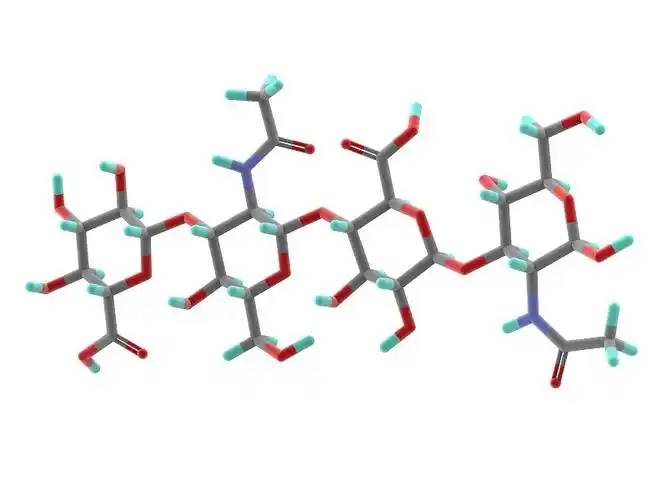
Chlorhexidine is the most commonly used antimicrobial component in mouthwashes, but it also has side effects such as mucosal irritation, dryness, and staining. How to use hyaluronic acid as an alternative component or reduce its dosage has attracted increasing attention from researchers. Begum Gizligoz et al. [18] selected 33 healthy participants and employed a randomised, double-blind, crossover clinical study design, using plaque index (PI), gingival index (MGI), and gingival crevicular fluid volume (GCF) as evaluation criteria to assess the oral hygiene efficacy of 0.025% hyaluronic acid mouthwash, 0.2% chlorhexidine mouthwash, and pure water. The results showed that hyaluronic acid had a slightly lower plaque-inhibiting effect than chlorhexidine; the improvement effects of hyaluronic acid on MGI and GCF were similar to those of chlorhexidine; compared with pure water and chlorhexidine mouthwash, hyaluronic acid mouthwash had a better taste and could alleviate irritation, burning sensation, dry mouth, and numbness.
Ali A. Abdulkareem et al. [19] selected 75 dental students with plaque gingivitis and evaluated three commercially available products—0.12% chlorhexidine mouthwash, 0.025% hyaluronic acid mouthwash, and an antioxidant mouthwash—and obtained similar results. All three mouthwashes significantly improved gingival bleeding. Although chlorhexidine mouthwash had the strongest inhibitory effect on plaque, participants preferred the hyaluronic acid mouthwash. Some researchers have also combined hyaluronic acid with chlorhexidine to enhance their effects. Genovesi et al. [20] added 0.12% hyaluronic acid to 0.12% chlorhexidine mouthwash and found that adding hyaluronic acid to the mouthwash significantly inhibited plaque formation compared to using chlorhexidine alone.
In the field of oral medicine, hyaluronic acid also plays an important regulatory role in the inflammatory process: inhibiting the levels of prostaglandin E2; suppressing the chemotaxis and migration of inflammatory cells; inhibiting the phagocytic activity of phagocytes; and scavenging prostaglandins, metalloproteinases, and reactive oxygen species produced by inflammatory cells [21]. Additionally, Chen et al. [22] found that hyaluronic acid with a molecular weight of 1,300 kDa at a concentration of 5 mg/mL significantly reduced the production of inflammatory factors IL-6, IL-8, IL-1β, IL-4, IL-10, with inhibition rates of 80.17%, 69.07%, 88.61%, 84.56%, and 84.66%, respectively. Zhang Huwei et al. [23] investigated the efficacy of a toothpaste containing bioactive hyaluronic acid in improving gingivitis. The results showed that a toothpaste containing 2% bioactive hyaluronic acid could significantly alleviate common symptoms of gingivitis, such as gum discomfort, swelling, and bad breath, and improve clinical signs such as gum bleeding and gum colour within a short period. Lei Xiquan et al. [24] disclosed a patent for a toothpaste containing hyaluronic acid and trehalose, with hyaluronic acid content ranging from 0.05% to 0.5%, providing a moist environment for the oral cavity and exhibiting moisturising and gum-protective effects.
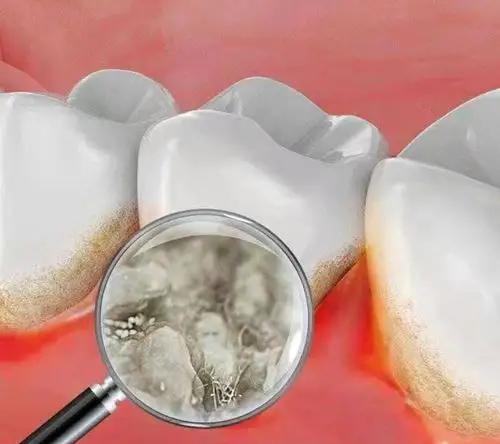
2.3 Promoting cell proliferation and repairing oral injuries
Oral mucosa is an important protective system of the human body, shielding against external harmful stimuli while maintaining the functional integrity of the epithelium. Poor dietary habits, diseases, and other factors can cause damage to the oral mucosa. Additionally, improper brushing techniques can lead to mechanical damage to the gingival tissue.
Hyaluronic acid, as an endogenous component of the body, plays a crucial role in wound healing. During tissue repair, hyaluronic acid collaborates with collagen, fibrin, and other matrix molecules to form a temporary scaffold that supports cell migration and adhesion, regulating cell adhesion, migration, and differentiation. Additionally, hyaluronic acid can reduce the activity of serum proteases, slowing down the degradation rate of the extracellular matrix, thereby promoting wound healing [25]. Furthermore, hyaluronic acid has the function of promoting granulation tissue formation.
Chen Minshan et al. [22] used a human gingival cell mechanical injury repair model and found that the cell proliferation rates in the 300 kDa hyaluronic acid group and the 1,300 kDa hyaluronic acid group were significantly higher than those in the control group, indicating that hyaluronic acid can promote cell proliferation and repair gingival tissue damage. Hyaluronic acid [26] was found by Mmad H.M. et al. to significantly increase the content of hyaluronic acid and type III collagen in damaged tissues and maintain their stable presence for a certain period of time when applied to rat oral wound sites, thereby promoting wound healing and reducing scar tissue formation. Zhang Zhen [27] used a circular full-thickness defect model on the oral mucosa of the palate (φ3 mm) in SD rats to study the effects of exogenous hyaluronic acid on oral wound healing. The results indicated that hyaluronic acid promotes wound healing in the early stage, reduces inflammatory responses during the healing process, and promotes mucosal epithelial regeneration.

3 Commercially available oral care products containing hyaluronic acid
In 1998, Japanese company LION [28] disclosed a hyaluronic acid-containing oral care compound designed to inhibit bacteria causing periodontal issues, which could be formulated into toothpaste, tooth powder, mouthwash, and other oral care products. However, according to data from Mintel, the first hyaluronic acid-containing mouthwash—Japan's Yoshida Company's ‘Oral Wet Mouthwash’—was not launched until 2002; in 2007, the first hyaluronic acid-containing toothpaste, ‘Sapphire Sensitive Toothpaste,’ was introduced in the Netherlands. Today, there are nearly 100 oral care products containing hyaluronic acid. Sunstar's GUM and Ora2 have launched hyaluronic acid-containing oral moisturising product series in multiple regions worldwide; LACALUT and ORAL-O-SEPT have introduced gum care products with hyaluronic acid as the active ingredient; since 2020, the Chinese market has also seen the launch of multiple oral care products containing hyaluronic acid, including toothpaste, mouthwash, and oral sprays in various formulations (see Table 1).
4 Application Trends of Hyaluronic Acid in Oral Care Products
4.1 Formulation of Hyaluronic Acid
Hyaluronic acid is a high-molecular-weight polysaccharide with a wide molecular weight range, from several thousand to several million. Different molecular weights
hyaluronic acid exhibit distinct characteristics and functions. High-molecular-weight hyaluronic acid has strong film-forming properties, forming a physical barrier on the oral mucosa surface to prevent moisture evaporation, moisturise the oral mucosa, isolate bacterial or foreign stimuli, and protect cells; low-molecular-weight hyaluronic acid can be absorbed through the skin, supplementing endogenous hyaluronic acid, and possesses deep moisturisation, free radical scavenging, oral mucosa repair, and beneficial effects on gum health.

Chen Minshan et al. [29] disclosed a multi-functional oral care composition containing a hyaluronic acid mixture, combining hyaluronic acid of different molecular weight ranges as the main active ingredient and coformulated with zinc citrate to achieve a synergistic effect, thereby providing beneficial effects for daily oral health maintenance. Feng Ning et al. [30] conducted an in-depth study on the oral care effects of hyaluronic acid with different molecular weights and developed a hyaluronic acid oral care formulation. This formulation consists of the following components: 30%–40% of hydrolysed hyaluronic acid or its salts with a molecular weight of 2–5 kDa, 35%–45% of hyaluronic acid or its salts with a molecular weight of 200–600 kDa, and 20–30% of hyaluronic acid with a molecular weight of 1,300–1,500 kDa or its salts. Efficacy evaluation results indicated that this formulation exhibits significant oral moisturising effects, reduces the release of inflammatory factors from gingival cells, and repairs damaged oral cells, providing comprehensive care for oral health. It can be applied to various oral care products such as toothpaste, mouthwash, and sprays. Xu Haiyan et al. [31] added this formulation to toothpaste with different formulations and examined the physical and chemical properties of the toothpaste as well as the hyaluronic acid content. The results showed that the physical and chemical properties of the toothpaste were stable, the hyaluronic acid content did not decrease significantly, and it was well compatible with other raw and auxiliary materials.
4.2 Innovative Applications of Oral Care Products
Mintel's February 2020 Oral Hygiene Product Innovation Report noted that incorporating oral health into the beauty category is one of the key trends in product innovation, drawing inspiration from the cosmetics market to develop fashionable packaging designs and introduce innovative product concepts. As a star ingredient in the cosmetics industry, hyaluronic acid has garnered increasing attention from oral care product developers. According to data from Mintel GNPD (Mintel Global New Product Database), hyaluronic acid-containing oral care products have seen significant growth since 2018.
On 29 June 2020, China's ‘Regulations on the Supervision and Administration of Cosmetics’ were officially implemented, stipulating for the first time that ‘toothpaste shall be managed in accordance with the relevant provisions of these regulations for ordinary cosmetics.’ This policy adjustment will also promote cross-industry integration between beauty and skincare and oral care in the Chinese market, and hyaluronic acid, as a natural, multi-functional ingredient, will have greater application opportunities.
Reference
[1] DAHIYA P, KAMAL R. Hyaluronic acid: a boon in periodontal therapy [J]. North American Journal of Medical Science, 2013 (5):309-315.
[2] IJUIN C, OHNO S, TANIMOTO K, et al. Regulation of hyaluronan synthase gene expression in human periodontal ligament cells by tumour necrosis factor-alpha, interleukin-1beta and interferon- gamma [J]. Archives of Oral Biology, 2001 (46):767-772.
[3] BIAN ZHUAN. Oral biology, for stomatology, 4th edition [M]. Beijing: People's Medical Publishing House, 2012:42-50.
[4] XING RUDONG, ZHANG SHIGUO, CHANG SHIMIN. Detection of hyaluronic acid levels in healthy human saliv [J]. Journal of Modern Stomatology, 2001, 15(3) :176-178.
[5] YANG GUOFENG, MO SHENZHENG, JIANG BEIZHAN. Temporal-spatial expression of hyaluronic acid in the first mandibular mouse molar tooth germs [J]. Journal of Oral Science Research, 2015, 31(7) :58-661.
[6] ZHANG YIDING, CHENG XINGQUN, WU HONGKUN. The application of hyaluronic acid in the treatment of oral diseases [J]. Chinese Journal of Geriatric Dentistry, 2019, 17(2) :108-112.
[7] ZHANG ZHEN, WANG XIAOFEI. Hyaluronic acid and its research and application in oral and maxillofacial surgery [J]. Stomatology, 2020, 40(2) :176-179.
[8] XIANG JIANQIANG. China oral care industry history and development situation [J]. Detergent & Cosmetics, 2013, 36(2) :1-8.
[9] Science and technology information research group of China Oral Care Industry Association. The latest development and prospect of the product technology in oral cleaning & care industry [J]. Oral Care Industry, 2018, 28(2):37-40.
[10] XU CHUNSHENG. Current situation and trend of the technology development of oral care products in China [J]. Detergent & Cosmetics, 2019, 42(8) :11-16.
[11] ZHANG YING, CUI DAN. Clinical evaluation and countermeasures of xerostomia [J]. Chinese Journal of Practical Stomatology, 2017, 10(9) :530-534.
[12] NÄRHI T O. Prevalence of subjective feelings of dry mouth in the elderly [J]. Journal of Dental Research, 1994, 73(1):20-25.
[13] WANG BIN, XING YANPING, FAN XUE, et al . Application of hyaluronic acid and hyaluronate in preparation of composition for treating and alleviating xerostomia: CN103405470A [P]. 2013-11-27.
[14] MENG XIANGJING, LIU SHAOYING, ZONG GONGLI, et al. Composition for relieving xerostomia and preparation method thereof: CN105267234A [P]. 2016-01-27.
[15] MASTERS J G, SHIRA P. Dentifrice compositions for treating xerostomia: CN101795686A [P]. 2010-08-04.
[16] HUANG JIAO. The study of the effect of Gengigel gel in the treatment of plague-induced gingivitis [D]. Chengdu: Sichuan University, 2004.
[17] MUN ERA H B, KAW THER A, FITOON A, et al. Antimicrobial efficacy of 0.8% hyaluronic acid and 0.2% chlorhexidine against Porphyromonas gingivalis strains: an in-vitro study [J]. Pakistan Journal of Medical Sciences, 2020, 36(2):111-114.
[18] BEGUM G, GIZEM I K, OGUL L T, et al. Plaque inhibitory effect of hyaluronan-containing mouthwash in a 4-day Non-brushing model [J]. Oral Health & Preventive Dentistry, 2020, 18(1):61-69.
[19] ALI AA, ZAID A M, HAYDER R A, et al. A randomized double-blind clinical trial to evaluate the efficacy of chlorhexidine, antioxidant, and hyaluronic acid mouthwashes in the management of biofilm-induced gingivitis [J]. International Journal of Dental Hygiene, 2020 (1) :1-10.
[20] GENOVESIA, BARONEA, TOTI P, et al. The efficacy of 0.12% chlorhexidine versus 0.12% chlorhexidine plus hyaluronicacid mouthwash on healing of submerged single implant insertion areas: a short-term randomized controlled clinical trial [J]. International Journal of Dental Hygiene, 2017, 15(1) :65-72.
[21] SUN CHUNYAN, CHEN XUE, LIN LI. Application of hyaluronic acid to oral medicine [J]. Chinese Journal of Practical Stomatology, 2013, 6(1) :56-59.
[22] CHEN MINSHAN, LI LIN, WANG ZHENSHI, et al. High molecular weight hyaluronic acid regulates P. gingivalis- induced inflammation and migration in human gingival fibroblasts via MAPK and NF-kappaB signaling pathway [J]. Archives of Oral Biology, 2019(98):75-80.
[23] ZHANG HUAWEI, WEI WANGRONG, CHENG XIFANG, et al. To investigate the effect of biological activity of hyaluronic acid brushing treatment of gingivitis [J]. Journal of Clinical Medical Literature, 2015, 23(2):4808-4809.
[24] LEI XIQUAN, GUAN YUYU, PENG XIUQING. Toothpaste containing hyaluronic acid and trehalose and preparation method thereof: CN110123702A [P]. 2019-08-16.
[25] PROSDOCIMI M, BEVILACQUA C . Exogenous hyaluronic acid and wound healing: an updated vision [J]. Panminerva Medica, 2012, 54(2) :129-135.
[26] HAMMAD H M, HAMMAD M, ABDELHADI I N, et al. Effects of topically applied agents on intra-oral wound healing in a rat model: a clinical and histomorphometric study [J]. International Journal of Dental Hygiene, 2011, 9(1):9-16.
[27] ZHANG ZHEN. Histomorphological study on the effect of hyaluronic acid on oral wound healing in rats [D]. Taiyuan: Shanxi Medical University, 2019.
[28] MORISHIMA SEIJI, OKADA TOSHIMOCHI, YOSHIKAWA MASARU. Composition for oral cavity: JPH10182390A [P]. 1998-07-07.
[29] CHEN MINSHAN, WANG ZHENSHI, LI LIN, et al. Multiple-effect oral cavity composition containing hyaluronic acid mixture and application thereof: CN107536725A [P]. 2018-01-05.
[30] FENG NING, ZONG WENBIN, MAO HUA, et al. Hyaluronic acid oral care composition as well as preparation method and application thereof: CN110585062A [P]. 2019-12-20.
[31] XU HAIYAN, WANG HAIYING, XIAO XIAOHONG, et al. Application of hyaluronic acid in toothpaste [J]. Oral Care Industry, 2019, 29(2) :6-10.


 English
English French
French Spanish
Spanish Russian
Russian Korean
Korean Japanese
Japanese